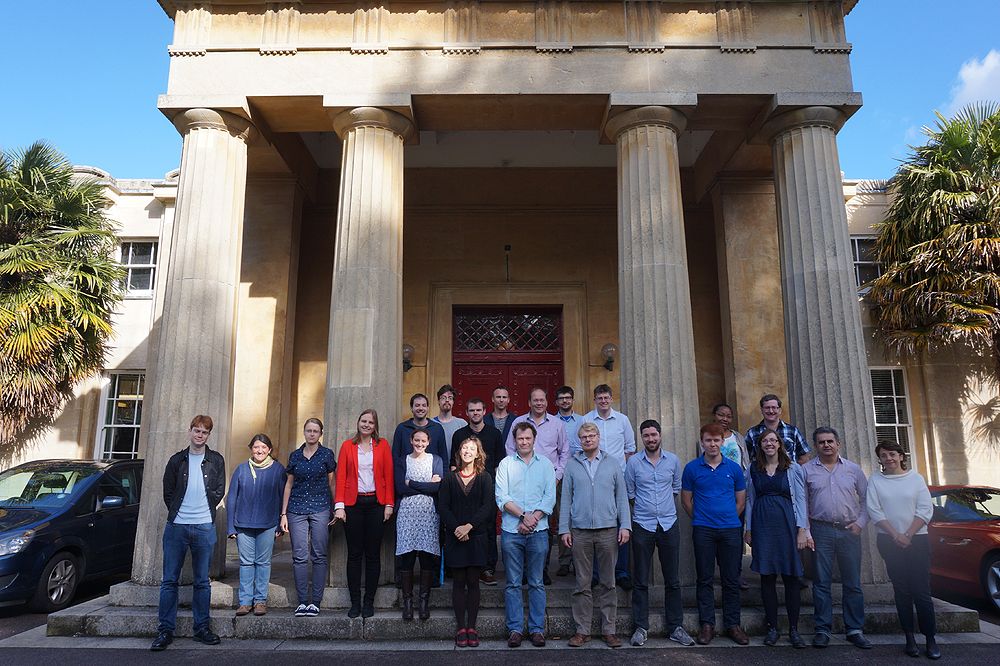Difference between revisions of "Sharp Eyes on European Skies"
| (32 intermediate revisions by 2 users not shown) | |||
| Line 1: | Line 1: | ||
| − | |||
| − | + | [[File:SEES_-_2.jpg|1000px|centre]] | |
| − | + | Wednesday Sept. 23 (lunch time) to Friday Sept. 25 (lunch time) | |
| − | + | ||
| − | + | Institute of Astronomy, Cambridge, UK | |
| − | + | ||
| − | + | <strong>Rationale</strong> | |
| + | |||
| + | The workshop will focus on the potental of high angular resolution surveys and | ||
| + | studies of (circum-)nuclear transients (e.g. SNe and TDEs) in galaxies. While | ||
| + | the newly-started wide-field transient surveys are now strongly increasing the | ||
| + | transient statistics locally, the objects that occur within the nuclear regions | ||
| + | galaxies, and especially in starburst galaxies and luminous infrared galaxies | ||
| + | (LIRGs) have remained mostly unrevealed. The idea of this informal workshop is | ||
| + | to get together and exchange ideas on the ongoing and future high resolution | ||
| + | transient surveys, such as the Gaia transient searches, the near-IR AO | ||
| + | searches for supernovae in LIRGs, radio searches and studies of SNe in LIRGs, | ||
| + | also connecting with the star formation properties and studies of the | ||
| + | actively star forming host galaxies at high angular resolution. | ||
| + | |||
| + | <strong>Main science topics:</strong> | ||
| + | |||
| + | 1. Gaia Alerts at high spatial resolution | ||
| + | |||
| + | 2. NIR adaptive optics detection and study of transients | ||
| + | |||
| + | 3. Interferometric radio and sub-mm detection and study of transients | ||
| + | |||
| + | 4. Detection and study of tidal disruption events (TDEs) | ||
| + | |||
| + | 5. High resolution studies of starburst galaxies and LIRGs | ||
| + | |||
| + | [[Slides]] | ||
| + | |||
| + | [[Registration]] | ||
| + | |||
| + | [[Accomodation and travel]] | ||
| + | |||
| + | [[Schedule]] | ||
| + | |||
| + | [[Format and agenda| Participants]] | ||
| + | |||
| + | [[Other meetings at the IoA]] | ||
Latest revision as of 17:31, 5 October 2015
Wednesday Sept. 23 (lunch time) to Friday Sept. 25 (lunch time)
Institute of Astronomy, Cambridge, UK
Rationale
The workshop will focus on the potental of high angular resolution surveys and studies of (circum-)nuclear transients (e.g. SNe and TDEs) in galaxies. While the newly-started wide-field transient surveys are now strongly increasing the transient statistics locally, the objects that occur within the nuclear regions galaxies, and especially in starburst galaxies and luminous infrared galaxies (LIRGs) have remained mostly unrevealed. The idea of this informal workshop is to get together and exchange ideas on the ongoing and future high resolution transient surveys, such as the Gaia transient searches, the near-IR AO searches for supernovae in LIRGs, radio searches and studies of SNe in LIRGs, also connecting with the star formation properties and studies of the actively star forming host galaxies at high angular resolution.
Main science topics:
1. Gaia Alerts at high spatial resolution
2. NIR adaptive optics detection and study of transients
3. Interferometric radio and sub-mm detection and study of transients
4. Detection and study of tidal disruption events (TDEs)
5. High resolution studies of starburst galaxies and LIRGs
